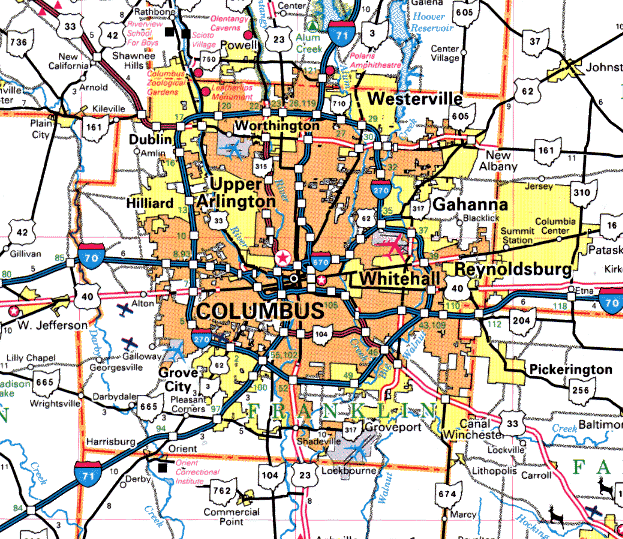
Back
Helwig, Richard. Ohio Ghost Towns No. 53: Franklin County. Sunbury, OH: Center for Ghost Town Research in Ohio, 1988.
Ohio Atlas and Gazetteer. Yarmouth, ME: DeLorme, 1999.
|
Ghost Towns of Franklin County |

Ohio Atlas and Gazetteer. Yarmouth, ME: DeLorme, 1999.